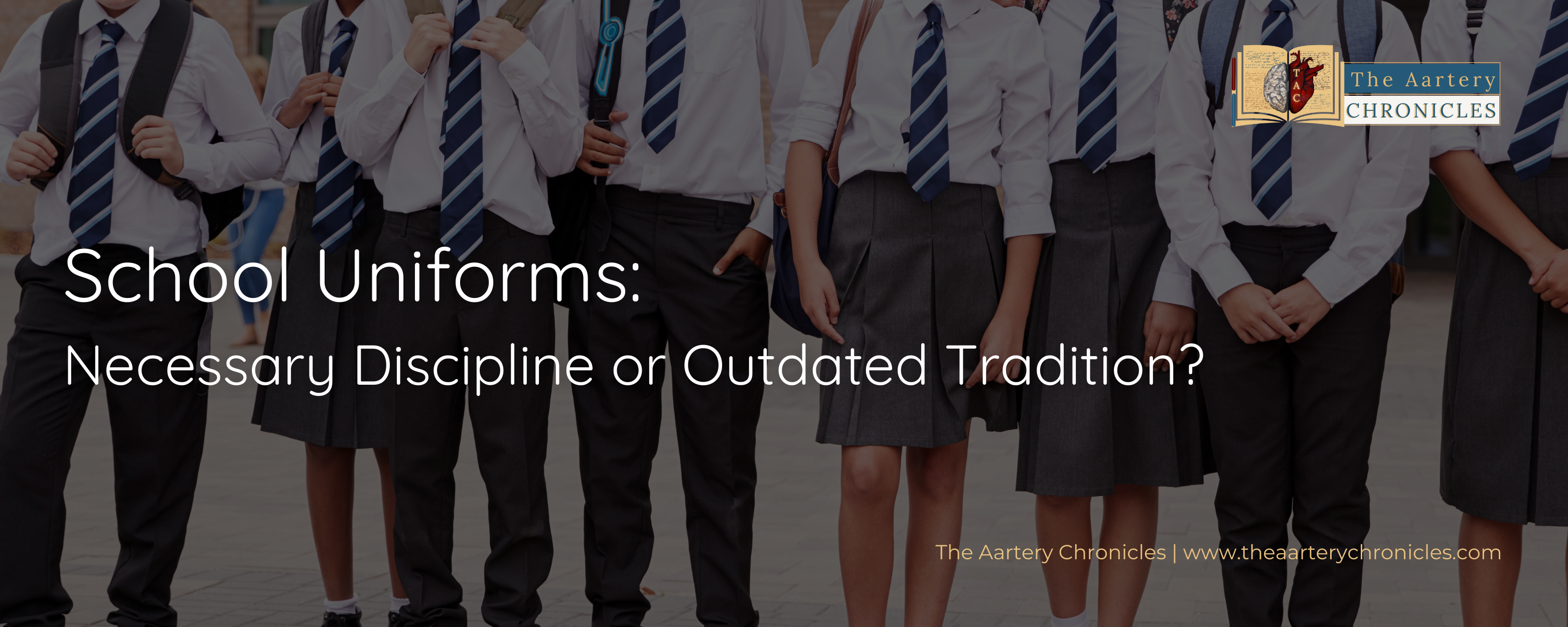

The Pros & Cons of School Uniforms and Their Influence on Mental Health
School uniforms have been a topic of debate for decades. While some argue that they are a necessary tool for discipline, others see them as an outdated tradition that stifles individuality. This article explores the pros and cons of school uniforms, backed by research and expert opinions, to help readers form their own informed opinions on the matter.
Uniforms have been a part of schools, the military, and other organizations for centuries. They have been associated with discipline, equality, and identity. However, the debate about the necessity of uniforms in schools is ongoing. Some people argue that uniforms are necessary to maintain discipline and order, while others see them as an outdated tradition that restricts individuality and creativity. In this blog, we will explore the pros and cons of uniforms in schools and analyze whether they are a necessary discipline or an old custom.

Equality and Unity
Uniforms create a sense of equality and unity among students. They remove socioeconomic barriers and reduce peer pressure and bullying based on clothing brands or styles. Every student, regardless of their background, wears the same uniform, which promotes a feeling of unity and belongingness.
Discipline and Order
Uniforms are associated with discipline and order. They provide a clear set of guidelines for students to follow, eliminating the need for teachers and administrators to enforce dress codes. Uniforms can also help create a professional learning environment, which is conducive to academic success.
Cost-Effective
Uniforms are cost-effective for parents and guardians, as they don’t have to purchase expensive clothing or worry about their children keeping up with the latest fashion trends. Uniforms are also durable and can last for a long time, reducing the need for frequent replacements.
Safer Environment
Uniforms can contribute to a safer school environment. They help identify students who are not part of the school and can prevent intruders from entering school premises. Uniforms also make it easier for teachers and staff to identify students in case of an emergency.

Restricted Individuality
Uniforms restrict individuality and creativity among students. Students are not able to express themselves through clothing or accessories, which can negatively affect their self-esteem and confidence. Creativity and individuality are important for personal growth and development, and uniforms can stifle this growth.
Expensive
Uniforms can be expensive, especially if the school does not provide them. Parents and guardians may have to purchase multiple uniforms, which can become a financial burden. Some schools require specific brands or styles of uniforms, which can be even more expensive. The cost of Uniforms must be fixed by taking into account multiple factors.
Uncomfortable
Uniforms can be uncomfortable, especially in extreme weather conditions. They may not be suitable for all body types and sizes, which can cause discomfort and even health issues. They must be well-suited to their environment, adapting to the demands of location, and season.
Ineffective
Uniforms may not be effective in achieving their intended purpose. Students can still find ways to express themselves, even with uniforms. Uniforms also do not address the root causes of behavioural issues or academic performance, which require more holistic approaches.

School Uniforms and their influence on Mental Health
The psychological impact of school uniforms on students’ mental health is garnering significant attention from clinicians and Public health experts due to their potential to influence emotional well-being. Originally implemented to foster unity and discipline, uniforms can subtly evoke a spectrum of profound psychological responses that require detailed examination. The following points display the intricate connection between uniforms and mental health:
Conformity Stress and Identity Suppression: The uniform’s standardized visual manifestation often instigates an internal conflict between conformity and individuality. This, in turn, can lead to heightened stress levels, manifesting as internal conflict and cognitive dissonance. During the crucial phase of identity formation, uniforms may impede the individuation process. This may elicit psychological responses such as heightened anxiety and feelings of detachment from self.
Body Image Impact: Uniform designs may exacerbate body image disturbances, amplifying pre-existing self-consciousness and triggering negative cognitive schemas.
Financial Strain: The financial burden associated with acquiring uniforms, particularly in financially strained households, can elicit anxiety and foster pervasive feelings of inadequacy, further fueling underlying emotional fragility.
Some students may derive comfort from the uniformity, while others endure a diminished sense of agency and self-esteem. School uniforms have a detailed and complex effect on students’ emotions and mental health. Like various other factors that play a significant role in our lives, the influence of Uniforms is also not so straightforward; it involves various factors and considerations.
In conclusion, uniforms have their advantages and disadvantages, and the decision to implement them in schools should be based on the specific context and needs of each school. While uniforms can promote a sense of equality and unity, they can also restrict individuality and creativity. They can be cost-effective and contribute to a safer environment, but they can also be uncomfortable and ineffective. It is important to consider the views of all stakeholders, including parents, students, and educators, and weigh the pros and cons before making a decision.
Ultimately, whether uniforms are a necessary discipline or an old custom depends on the perspective of the individual. While some may argue that uniforms are essential for maintaining discipline and order, others may see them as an outdated tradition that restricts individuality and creativity. The debate about uniforms in schools is ongoing, and it is up to each school to decide what works best for them.
Uniforms, deriving from “uni” signifying one, and “form” representing identity, serve as a means to promote a sense of equality. They convey a crucial message that irrespective of our origins or ancestral endeavours, we unite under a common objective. This collective purpose binds us to the institution’s mission—be it education in schools and colleges, caregiving and hygiene maintenance in healthcare settings, or upholding the law and protecting citizens in defence roles.
Uniforms stand as unwavering symbols, constantly reminding us of our shared values and the direction we are progressing towards. In this context, I concur with my friend’s perspective: uniforms should prioritize comfort and refrain from being exploited as tools of endorsement.
– Dr Darshit J. Patel, MD, General Medicine
References:
- BBC News. (2018, September 20). School uniform: Does it really matter what kids wear? Retrieved from https://www.bbc.com/news/uk-england-45511131
- Jeynes, W. H. (2019). A meta-analysis on the effects of school uniforms. Education and Urban Society, 51(1), 22-42.
- Mills, C. B. (2019). Dressing for success: Examining the effects of school uniform adoption. Journal of School Choice, 13(1), 99-121.
- NAESP. (2017). What research says about school uniforms. Retrieved from https://www.naesp.org/sites/default/files/resources/2/Principal/2017/J-F_p26.pdf
- ProCon.org. (2021, March 19). School uniforms – ProCon.org. Retrieved from https://school-uniforms.procon.org/





